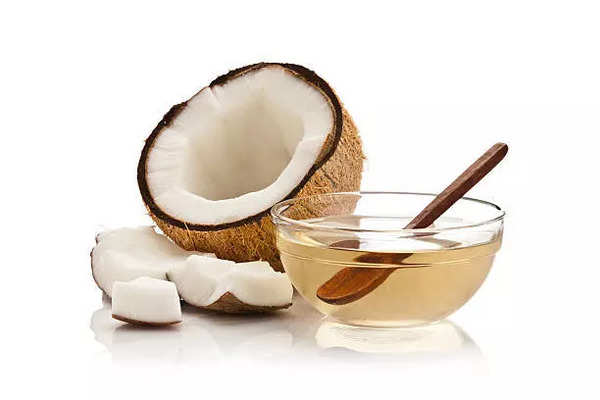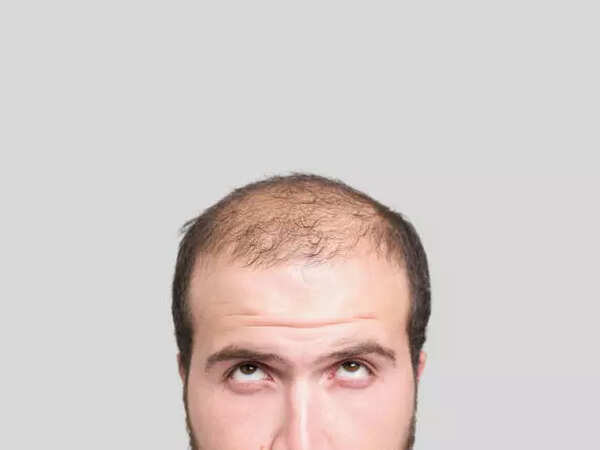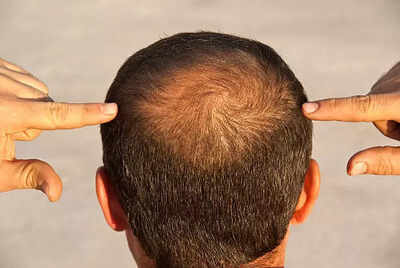Hair Regrowth Oil: How to use Coconut Oil to regrow hair on a bald patch |

Hair thinning and bald patches can feel frustrating and disheartening, whether caused by stress, hormonal changes, illness, or genetics. But nature offers gentle remedies and one of the most trusted ingredients in the world of holistic hair care is coconut oil. Rich in essential fatty acids, antioxidants, and nutrients, coconut oil isn’t just a kitchen staple, it can be your go-to rescue remedy for hair loss.
Let’s tell you in detail how to use coconut oil effectively to stimulate hair regrowth on bald patches, what makes it work, and how you can supercharge its benefits with a few simple additions.
Why Coconut Oil?
Coconut oil is packed with lauric acid, which penetrates deep into the hair shaft, unlike most other oils that sit on the surface. Its antibacterial, antifungal, and anti-inflammatory properties make it perfect for calming irritated scalps, clearing clogged follicles, and nurturing healthier hair growth.

Moreover, coconut oil boosts blood circulation, supports collagen production, and helps reduce protein loss from hair. All these factors play a key role in creating a healthy environment for new strands to grow on bald or thinning patches.
Step-by-step: Using Coconut Oil on a bald patch
Choose the right type of Coconut Oil
For best results, use cold-pressed, virgin coconut oil. Avoid refined or hydrogenated versions, as they are stripped of key nutrients. Look for organic options to ensure purity and potency.
Warm the oil slightly
Take 2–3 tablespoons (depending on the size of the bald patch) of coconut oil and warm it up slightly. Lukewarm oil penetrates the scalp more efficiently. Avoid overheating – you want it warm, not hot.
Section and apply
Part your hair to expose the bald patch clearly. Using your fingertips or a cotton ball, gently apply the oil directly to the area. Massage in circular motions for 5–10 minutes. This stimulates blood flow and opens the follicles for deeper absorption.
Hair growth-boosting additions to Coconut Oil
To enhance the regrowth process, consider mixing coconut oil with the following natural ingredients known for hair stimulation:
Castor Oil (for intense regrowth)
Rich in ricinoleic acid and omega-6 fatty acids, castor oil boosts circulation and strengthens roots.

Hair loss and bald patches can be distressing, but nature has provided us with several powerful remedies that can stimulate hair regrowth. One of the best natural ingredients for hair care is coconut oil, renowned for its deep nourishment, antibacterial properties, and ability to strengthen hair from the roots. When combined with the right ingredients, coconut oil becomes even more potent in promoting instant hair regrowth. If you’re struggling with thinning hair or bald patches, here are five powerful ingredients to mix with coconut oil for effective hair restoration.
Mix ratio: 1 tbsp castor oil + 2 tbsp coconut oil
Use: Apply 3 times a week for visible results within 6–8 weeks.
Peppermint or Rosemary Essential Oil (for scalp stimulation)
These essential oils are known to improve blood circulation and activate dormant follicles.
Add: 2–3 drops to your coconut oil before application
Warning: Always do a patch test for sensitivity.
Aloe Vera (for hydration and healing)
Aloe vera contains enzymes that can soothe the scalp and promote regrowth by reducing inflammation.
Mix: 1 tbsp aloe vera gel with 1 tbsp coconut oil
Use: Leave on for 30 minutes and rinse off.
The hot towel method
Once the oil is applied and massaged in, wrap your head in a warm towel for 15–20 minutes. The heat opens up the hair follicles and enhances oil absorption. This also helps detox the scalp and improve penetration of nutrients.
How often should you use Coconut Oil?
Mild thinning: 2–3 times a week
Severe hair loss or bald patches: Daily application or alternate days for at least 8–12 weeks
For best results, be consistent. Natural remedies take time, but regular application combined with massage can make a noticeable difference.
Rinsing and aftercare
After leaving the oil in for at least 1–2 hours (or overnight), use a mild, sulphate-free shampoo to wash it off. Avoid hot water and harsh chemical-laden products that can reverse your progress.
Once or twice a week, follow up with a DIY hair mask – like banana + coconut oil, or egg + yoghurt + coconut oil – to nourish and strengthen the new hair.
Lifestyle tips to boost results
While coconut oil can work wonders, hair regrowth is a holistic process. For faster results:
Eat protein-rich foods like eggs, lentils, nuts, and spinach.

Take biotin or zinc supplements after consulting your doctor.
Stay hydrated – water helps circulate nutrients.
Manage stress through yoga, meditation, or exercise – stress is a silent hair killer.
Avoid tight hairstyles that put tension on your scalp.
When to seek medical help
Coconut oil works well for mild to moderate hair loss, but if the bald patches persist or worsen despite consistent care, consult a dermatologist. Conditions like alopecia areata, fungal infections, or thyroid disorders may require medical intervention.
Nature takes its time, but it delivers – especially when used with patience and love. Coconut oil, when massaged regularly onto bald patches, doesn’t just nourish the roots; it revives them. Whether you’re dealing with a post-pregnancy hair fall, hormonal changes, or stress-induced shedding, this age-old remedy might just be your first step back to thicker, fuller locks.
So, grab that bottle, warm it up, and give your scalp a healing ritual it deserves.






